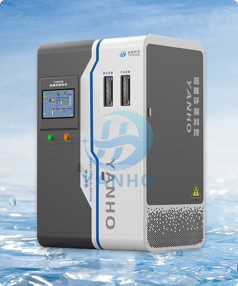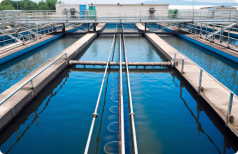Domestic sewage treatment

Domestic sewage treatment is the sewage generated in human daily life. It has a wide range of sources and requires more types of organic matter to be treated. It usually includes several types of kitchen wastewater, washing wastewater, and discharge wastewater, and their treatment requirements are very high. At present, water resources are scarce in many places. Therefore, after some sewage treatment, many water resources will be recycled and reused.
Equipment Process
After passing through the grid, the sewage enters the hydrolysis acidification tank (regulating tank) for water quality and quantity regulation. The effluent is lifted by a lift pump to the anaerobic biological tank (facultative tank A), and then enters the first level contact oxidation tank (0) for biochemical treatment before continuing with the second level contact oxidation tank (0). After solid-liquid separation in the sedimentation tank, disinfectants are added before entering the contact disinfection tank. After a certain contact time, the disinfected effluent can meet the discharge standards.
Equipment Advantages
-

Save land
Effectively utilizing land that can save occupation
-

Reduce costs
Effectively reducing costs
-

Save water
Realize effective reuse and water-saving of wastewater
-

Reduce stress
Reduce municipal management
-

Low sludge production
Low sludge production
-

Protect the environment
No impact on the surrounding environment
-

Fully automatic control
Fully automatic control, no need for personnel management
-

Simple and convenient
Simple operation and convenient maintenance
-

Good effect
Innovative technology with good results
设备参数
Application Area
-

Residential communities reclaimed water reuse
-

Towns and villages sewage disposal
-

Scenic spots and resorts Domestic sewage treatment
-

Airport and highway service areas
-

Rivers and Lakes Terminal sewage treatment
CONTACT US

Official Account


Mobile Browsing






 Hotline:
Hotline: Address:No.76 Longfei Road, Chengyang District,Qingdao, Shandong Province, China
Address:No.76 Longfei Road, Chengyang District,Qingdao, Shandong Province, China E-mail:y15092162376@163.com
E-mail:y15092162376@163.com